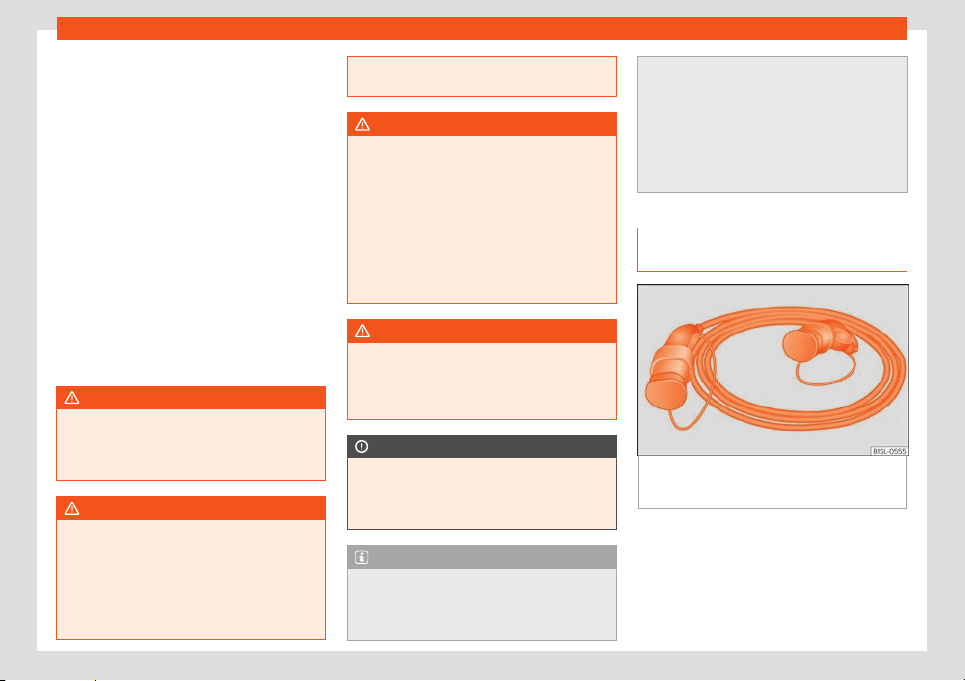Loading ...
Loading ...
Loading ...

High-voltage battery
How to maintain the protection device and
the char
ging connect
ors in good condition:
●
After using the charging cable, replace the
protective caps.
●
Protect them from intense solar radiation
(the outside temperature should not exceed
50°C (122°F)).
●
Do not drop them.
●
Do not insert them in liquid.
In the event of operating faults, SEAT recom-
mends the charging cables are checked by
one of its dealers.
If there is a fault in the power socket or in the
electrical installation, seek assistance from a
technician specialised in electrical installa-
tions.
WARNING
Never use damaged charging connectors
or cables. Bef
ore using the charging con-
nectors or cables, always check they are
not damaged.
WARNING
Always plug the charging cable for power
sockets dir
ectly into a power socket. Never
use the charging cable in combination with
an extension cable, a cable reel, a power
strip or an adapter, such as a travel adapt-
er or a timer. Otherwise this could lead to
injuries caused by fire or the charging ca-
ble or the electrical installation of the
proper
ty could be damaged.
WARNING
Never charge the battery using unknown
po
w
er sockets or electrical installations, or
those which have not been checked by du-
ly qualified technicians. Even very low
charging currents can cause important
damages, especially fires, when using
power sockets or electrical installations
that are in poor condition. In this case, seek
assistance from a technician specialised in
electrical installations.
WARNING
Loose or unsecured objects can cause seri-
ous injury in case of sudden manoeuvring
or braking or in case of an accident.
●
Al
ways store the charging cable safely.
CAUTION
A specialist in electrical installations
should check the char
ging cable on a regu-
lar basis. A tester adapter will be needed to
check the charging cables.
Note
Take into consideration the maximum ca-
pacity of the el
ectrical circuit used. If the
charging cable is plugged in along with
other electrical consumers into a power
socket on the same electrical circuit, this
could cause the fuse t
o trip. In this case, the
high-voltage battery will not charge. Dis-
connect all other electrical consumers
from the electrical circuit or use another
circuit. In this case, seek assistance from a
technician specialised in electrical instal-
lations.
Charging cable for charging sta-
tions (AC)
Fig. 157 In the luggage compartment: charg-
ing cabl
e f
or charging stations (depending on
the equipment).
Depending on the equipment, the vehicle will
come with a char
ging cabl
e for charging sta-
tions (alternating voltage)
›››
Fig. 157.
Bear in mind the procedure to be followed for
charging with alternating voltage
›››
page 169.
»
175
Loading ...
Loading ...
Loading ...